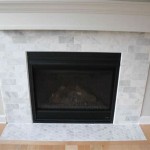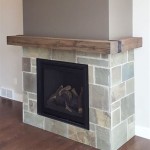```html
Outdoor Brick Fireplaces: A Comprehensive Guide
Outdoor brick fireplaces represent a timeless addition to any outdoor living space, offering both aesthetic appeal and functional warmth. Their enduring popularity stems from their robustness, design versatility, and ability to create a welcoming ambiance. This article provides a detailed overview of outdoor brick fireplaces, encompassing their benefits, design considerations, construction aspects, and maintenance requirements.
Benefits of Outdoor Brick Fireplaces
The advantages of incorporating an outdoor brick fireplace extend beyond simple aesthetics. They provide a focal point for outdoor gatherings, enhance property value, and offer a unique cooking opportunity.
Enhanced Outdoor Living Space: An outdoor fireplace transforms a patio or backyard into an inviting extension of the home. It provides a designated area for relaxation and entertainment, encouraging more frequent use of the outdoor space, particularly during cooler seasons. The radiant heat allows for comfortable gatherings even as temperatures drop, expanding the usable season for outdoor living.
Increased Property Value: A well-designed and professionally constructed outdoor brick fireplace can significantly increase a property's market value. It is viewed as a desirable amenity by potential buyers, indicating a thoughtfully planned and well-maintained outdoor area. The permanence and quality associated with brick construction further contribute to the perceived value.
Ambiance and Aesthetic Appeal: The flickering flames and natural texture of brick contribute to a captivating and relaxing atmosphere. The inherent warmth of the firelight creates a cozy and inviting setting, perfect for socializing or quiet contemplation. The design of the fireplace can be customized to complement the existing architectural style of the home, enhancing the overall aesthetic appeal of the property.
Cooking and Entertainment: Many outdoor brick fireplaces are designed with cooking surfaces or the option to incorporate grills and smokers. This allows for outdoor cooking and entertaining, providing a unique culinary experience. The open flame adds a distinct flavor to food, offering an alternative to traditional grilling methods. Furthermore, the fireplace can become a central point for social interaction during outdoor cooking events.
Durability and Longevity: Brick is a robust and weather-resistant material that can withstand the elements for decades, if properly maintained. Outdoor brick fireplaces require minimal upkeep compared to other outdoor heating options and are designed to resist damage from rain, snow, and extreme temperatures. This durability ensures a long-lasting investment.
Design Considerations for Outdoor Brick Fireplaces
Careful planning and design are crucial for creating an outdoor brick fireplace that meets both aesthetic and functional requirements. Factors to consider include placement, size, style, and local building codes.
Placement and Location: The location of the fireplace should be carefully considered in relation to existing structures, landscaping, and prevailing wind patterns. It should be positioned at a safe distance from flammable materials such as trees, fences, and overhanging roofs. Consider the proximity to seating areas and the overall flow of the outdoor space. Prevailing winds should be taken into account to minimize smoke exposure to guests and neighbors. Local building codes may dictate specific setbacks and clearance requirements.
Size and Scale: The size of the fireplace should be proportionate to the size of the outdoor area. A fireplace that is too large can overwhelm the space, while one that is too small may not provide adequate heat or visual impact. Consider the intended use of the fireplace and the number of people you anticipate accommodating. Determine the appropriate firebox size to generate the desired amount of heat.
Style and Design: The style of the fireplace should complement the architectural style of the home and the overall aesthetic of the outdoor space. Brick comes in a variety of colors, textures, and sizes, allowing for a wide range of design options. Consider incorporating architectural details such as arches, mantels, and decorative inlays to enhance the visual appeal. The design should also consider functionality, such as incorporating storage for firewood or seating built into the fireplace structure.
Ventilation and Chimney Design: Proper ventilation is essential for safe and efficient operation of the fireplace. The chimney should be designed to provide adequate draft, ensuring that smoke is effectively drawn away from the seating area. The height of the chimney should be sufficient to comply with local building codes and to prevent smoke from blowing back into the yard. Consider incorporating a chimney cap to prevent rain and debris from entering the fireplace.
Building Codes and Permits: Before beginning construction, it is essential to obtain the necessary permits from the local building department. Building codes typically address issues such as setback requirements, chimney height, and fire safety. Compliance with building codes is crucial for ensuring the safety and legality of the fireplace installation.
Construction and Maintenance of Outdoor Brick Fireplaces
Proper construction and regular maintenance are essential for ensuring the longevity, safety, and optimal performance of an outdoor brick fireplace. Both aspects require attention to detail and adherence to established best practices.
Foundation and Base Construction: A solid and stable foundation is critical for supporting the weight of the brick fireplace. The foundation should be constructed of reinforced concrete and should extend below the frost line to prevent cracking and shifting during freeze-thaw cycles. The base of the fireplace should be built with durable, fire-resistant materials such as firebrick and refractory mortar.
Bricklaying and Mortar Application: The bricklaying process should be performed by a skilled mason with experience in fireplace construction. The bricks should be laid in a consistent and level manner, with appropriate mortar joints. The mortar should be a high-quality refractory mortar that is specifically designed for high-temperature applications. Proper mortar application is essential for creating a strong and durable bond between the bricks.
Firebox Construction: The firebox is the heart of the fireplace and should be constructed with durable firebrick that can withstand the intense heat of the fire. The firebox should be properly sized to accommodate the desired amount of firewood. A smoke shelf should be incorporated into the design to deflect downdrafts and prevent smoke from entering the room. A damper should be installed to control the airflow and prevent heat loss when the fireplace is not in use.
Chimney Construction: The chimney should be constructed of fire-resistant materials and should be properly lined with a flue liner to protect the brickwork from the corrosive effects of smoke and creosote. The chimney should be designed to provide adequate draft and should be properly sealed to prevent water leakage. A chimney cap should be installed to prevent rain and debris from entering the fireplace.
Regular Cleaning and Inspection: Regular cleaning is essential for preventing the buildup of creosote, a flammable substance that can cause chimney fires. The chimney should be inspected annually by a qualified chimney sweep to identify any potential problems. Cracks in the brickwork, damaged mortar joints, and loose bricks should be repaired promptly to prevent further damage. The firebox should be cleaned regularly to remove ashes and debris.
Repair and Restoration: Over time, outdoor brick fireplaces may require repair or restoration due to weathering, wear and tear, or damage from improper use. Cracks in the brickwork can be repaired with patching mortar. Damaged mortar joints can be repointed with fresh mortar. Loose bricks can be re-laid with fresh mortar. In more severe cases, the entire fireplace may need to be rebuilt.
Safety Precautions: It's crucial to adhere to safety precautions when operating an outdoor brick fireplace. Never leave a fire unattended. Ensure the area around the fireplace is clear of flammable materials. Use a spark screen to prevent embers from escaping. Dispose of ashes properly in a metal container. Have a fire extinguisher readily available.
```
Small Outdoor Brick Fireplaces Related Post From Diy Fireplace Plans

Outdoor Brick Fireplace Landscaping Network

Outdoor Fireplace With Bench Seating W Tips From A Professional Mason

Outdoor Brick Fireplaces

Outdoor Combo Fireplace And Oven Round Grove S

25 Outdoor Fireplace Ideas Fireplaces Fire Pits

Diy Outdoor Fireplace Ideas

Outdoor Brick Fireplace Photos Ideas Houzz

Semplice Outdoor Fireplace Kit Rcp Block Brick

Outdoor Fireplace Kits Masonry Stone
Related Posts








